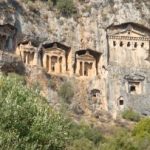Old Elazığ Population:
Old names: Carcathicerta (?), Kharpert (Armenian), Harpoot
Festival: 15 August (Assumption of the Virgin Mary)
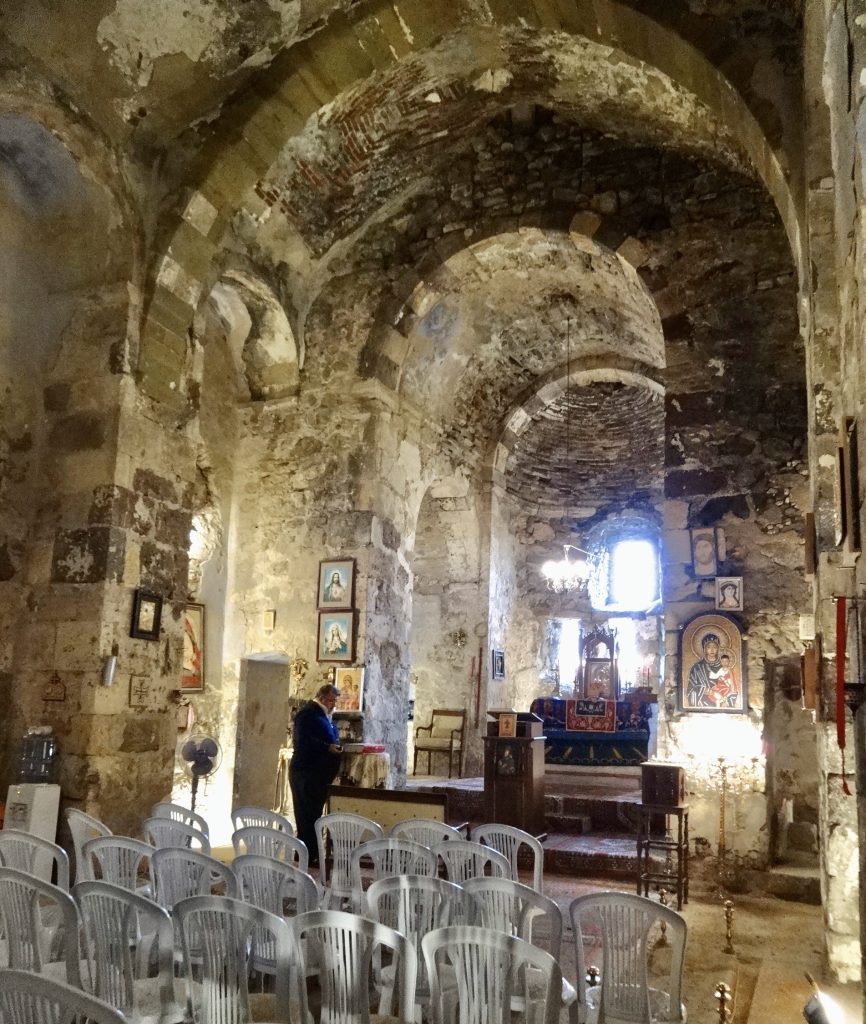
At first glance, the half-abandoned settlement of Harput is strikingly reminiscent of Van in eastern Turkey. In particular there’s the same castle straddling a plug of rock and the same cluster of ruins on the far side commemorating the days when thousands of people, mainly Armenians, lived in what was then a flourishing town. In Amurath to Amurath the British explorer Gertrude Bell left a description of Harput as it was in 1909 when it reminded her of a densely-packed Italian hill city.
Backstory
Harput’s history is the usual central Anatolian saga of revolving-door capture and recapture. First came the Romans and the Byzantines, then the Turcoman leader Çubuk Bey, who captured the castle in 1087. In 1112 it was the turn of the Artukid chief, Bebek Gazi, to grab the town. Then the Artukid ruler Balakgazi captured first Joscelin, the Crusader king of Edessa (Urfa), in 1122 and then King Baldwin II of Jerusalem. who arrived to try and rescue him in 1123. Both were imprisoned in Harput Castle. Balakgazi died in 1124 and was buried in Aleppo. There’s a statue of him behind the Lunapark.
In 1234 the Selçuk leader Alaeddin Keykubad swept through, followed by the Mongols in 1244. Finally, in 1516 the army of Sultan Selim I rode into town and secured it for the Ottomans.
Around town
The best place to start your exploration is the Çınar Park Et Lokantası where a set of old photographs show Harput as it was before 1915. Keep that picture in your mind’s eye as you gaze down from the castle — it will help you make sense of what you see.
Central Harput is dominated by Harput Kalesi (Harput Castle) which dates back to the eighth century B.C. and the time of the Urartians, an ancient people about whom not much is known but who were also responsible for Van Kalesi (Van Castle). Not so long ago, the castle was one of those ancient structures that managed to wallow in total anonymity in the remoter parts of Turkey. Restoration has given it a new lease of life, although many visitors will regret the crudity of the repairs, the installation of obtrusive security cameras and the litter problem that the growing number of sightseers has created. The most prominent remains inside the walls are of the old Artukid palace but excavations have also uncovered the remains of a medieval mosque and several Ottoman workshops. 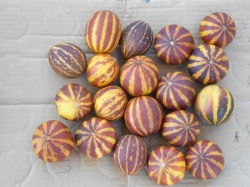 Dwarf canteloupe melons on sale in Harput
Dwarf canteloupe melons on sale in Harput
The grandeur of the castle’s setting is diminished not just by the quality of the restoration work but also by the Harput Hünkar Konağı, a huge restaurant constructed on an adjacent plug of rock as if to challenge it for supremacy.
From the summit of Harput Castle, it’s possible to look down on the shattered remains of the Kale Hamamı (bathhouse). You can also gaze out towards the lake created by the Keban Dam, a sight that would certainly not have greeted the castle’s earlier occupants.
A concrete roof turns out to cover what was once the 2nd-century Syrian Orthodox Church of Meryemana (St. Mary), one of the oldest churches in Turkey and built right into the rockface. Gaining access to it is tricky despite the tourism signs raising false hopes. Your best bet is probably to visit on 15 August when the church will be open to worshippers.
For the best views of the castle, you need to walk right round its base, following the signs towards the shrine of Fatih Ahmet Baba. A simple tea garden along the way offers panoramic views back over the ramparts, permitting you to see how the castle was built on an easily defensible site overlooking a ravine with the church tucked up neatly beneath it.
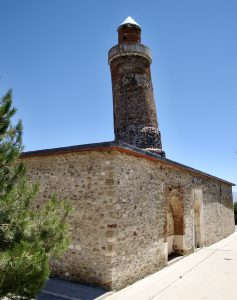 Signs also direct visitors to the Ulu Camii which was built for the Artukid leader, Fahreddin Karaarslan, in 1156. A low-slung stone building with a solitary, leaning-tower minaret, it’s filled with stone columns and used to be open to the skies until the courtyard was covered over to reduce heating bills. Strangely, it lacks a mimber.
Signs also direct visitors to the Ulu Camii which was built for the Artukid leader, Fahreddin Karaarslan, in 1156. A low-slung stone building with a solitary, leaning-tower minaret, it’s filled with stone columns and used to be open to the skies until the courtyard was covered over to reduce heating bills. Strangely, it lacks a mimber.
Next door to the mosque stands Harput’s newest and most delightful attraction, the Şefik Gül Kültür Evi (closed Mondays), a traditional wood and stone house with a wonderful walled garden. The house was built in the mid-19th century for Saraylı Muharrem A!a and formed the centrepiece of what was then the Keşoğlu Meydanı; a photograph in the brochure shows the neighbourhood as it was at that time, with houses tightly packed together around the mosque.
Over the next 150 years the house changed hands with alarming frequency until eventually it was bought by the Ankara-based Gülsan Şirketler Grubu which restored it to serve as an example of what might be possible in the village.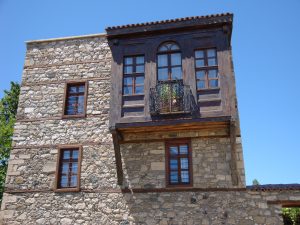
A quick tour of the house offers a snapshot reminder of Harput’s easterly location. Here are wonderful bench seats carved in the workshops of Mardin, there lovely metal door knockers hand-beaten in the workshops of Kemaliye. In the upstairs sitting room, a “kürsü mangal” (raised brazier) draped with a quilt recalls how, in the icy winters of central Anatolia, families would sleep around their primary source of heating with a communal quilt draped over them. A wooden cumba (bay window) looks out over the garden where a çeşme (fountain) provided water for household needs.
If you explore the backstreets of Harput you will probably stumble upon the completely plain octagonal tomb of Mansar Baba, which dates back to the 12th or 13th century. Of the nearby Esadiye Camii, little now survives except a ruinous mescit (small mosque) and tomb.
Far more conspicuous is the Sara Hatun Camii in the main square which was built in 1463 for Sara Hatun, the mother of Uzun Hasan, an Akkoyunlu ruler whose name crops up in the history of Hasankeyf. It was extensively renovated in the 17th century. The interior boasts a finely-painted dome supported on four stone columns.
Very close to it is the small Arap Baba Cami, built in 1280, with a fine navy-and-turquoise-tiled mihrab and a stumpy minaret still with worn bands of Selçuk carving on it. In a room at the back accessed via a very low arch Arap Baba is entombed amid the scent of rosewater.
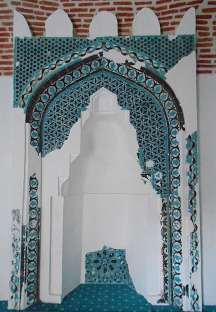
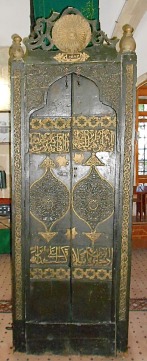 Right back where you started is the big Kurşunlu Cami, completed in 1739. Its overarching dome covers a largely empty space, although the wooden mimber is worth looking at for its fine carvings. The courtyard in front is shaded by a çınar (plane tree) planted c.1700.
Right back where you started is the big Kurşunlu Cami, completed in 1739. Its overarching dome covers a largely empty space, although the wooden mimber is worth looking at for its fine carvings. The courtyard in front is shaded by a çınar (plane tree) planted c.1700.
A few more old mosques and tombs are scattered around the popular Lunapark to which Elazığlıs flock at weekends.
Eating
Right beside the Sarahatun Cami, the Cimsit Hamamı has been turned into the inviting Ensar Mangal Vadisi restaurant where in winter diners eat at tables set up in the old disrobing room surrounded by all sorts of ethnographic bric-a-brac, including some extraordinary bulbous pots, like giant stove-pipes, in which the Harputlus used to store their grain. Their patlıcan soyurtma aubergine starter is delightful.
Sleeping
Harput has one boutique hotel which is sometimes full. If so, Elazığ offers a range of hotels mainly aimed at business travellers.
Transport info
There are regular flights from Ankara to Elazığ, plus a couple of flights a week from !stanbul.
Frequent dolmuşes to Harput leave from Elazığ’s small city-centre dolmuş terminal on Harput Caddesi.
Day trip destinations


